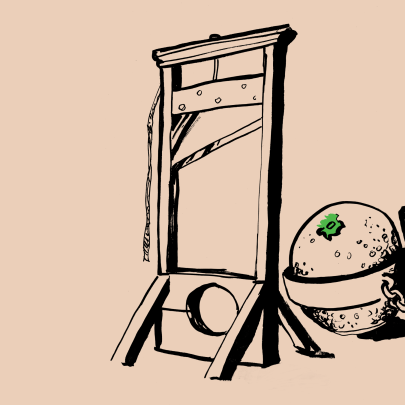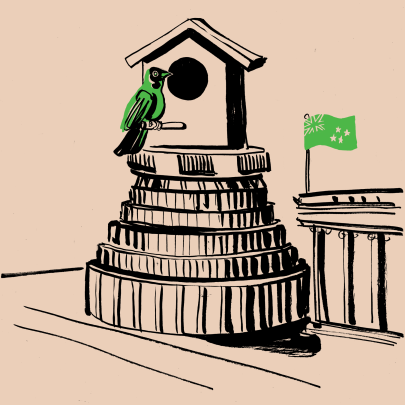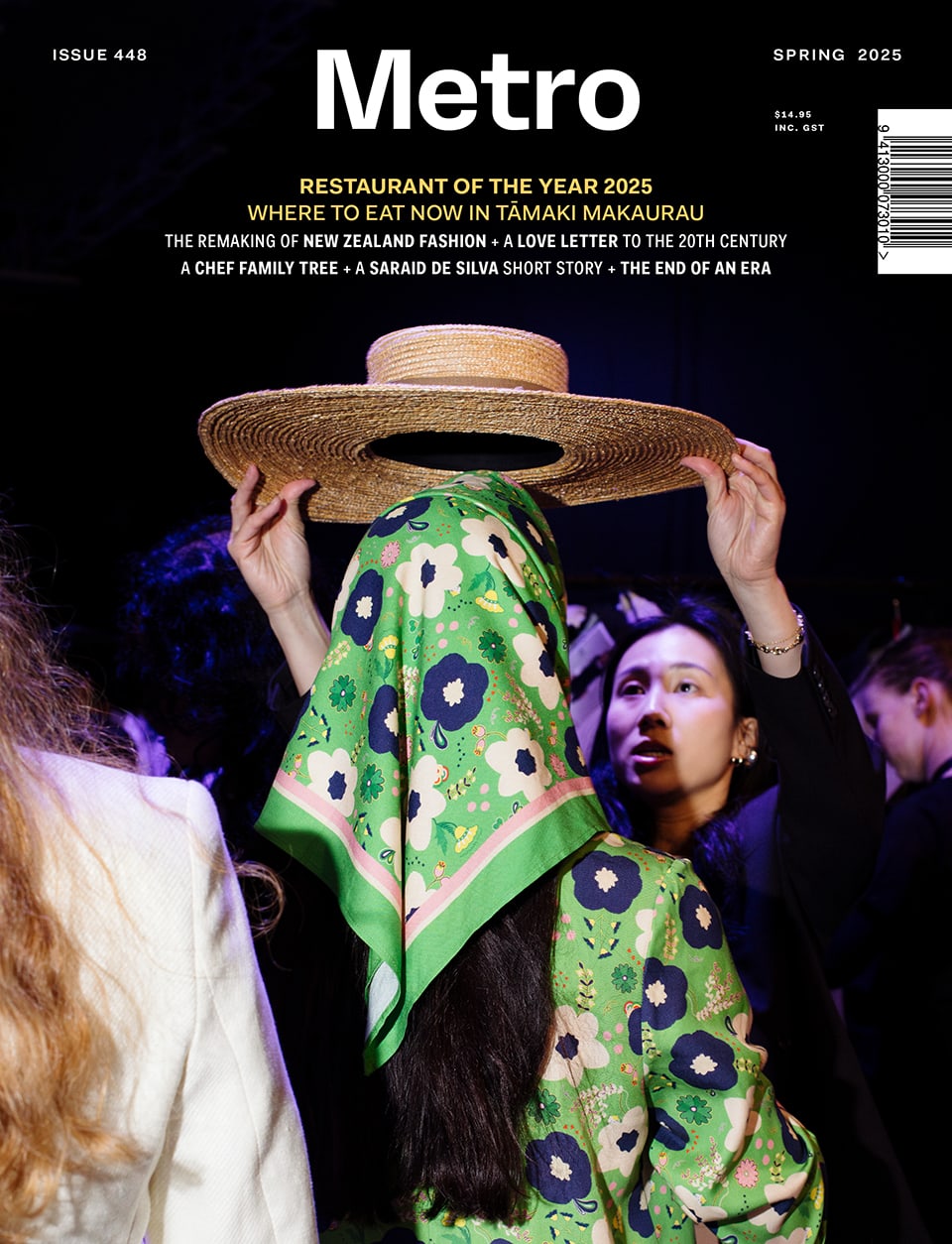Oct 13, 2016 Politics
Is this the Speech From The Throne that Phil Goff will make when he’s sworn in as mayor on November 1? It should be! C’mon Phil, here’s the perfect speech for a new mayor to inspire us with. How will you make Auckland the city it deserves to be? It’s all here…
(This speech was first published in the October 2016 issue of Metro and first appeared on this site on November 7 under the heading Tamaki Makaurau: City of a Thousand Lovers.)
Nga mihi nui kia koutou katoa. Welcome, friends and fellow citizens of Tamaki Makaurau. The city of a thousand lovers. The city loved by so many.
The city with 800 more cars every week. Nearly 45,000 people a year. That’s the population of Hamilton, every three and a half years.
There’s a good side to the growth. It brings opportunity.
More chances to buy and sell things, get a job, find workers for your company. More choice in the sports your kids play, the food you eat, the clubs you can join, the events you can take part in and the shows you can go along and watch.
More ways in which you can belong. Our communities are the villages in which we live, whether that’s in a suburban street or an apartment block.
Place is not the only determinant of community. We are defined by ethnicity, sexual identity and age; by communities we simply belong to and communities we choose to devote ourselves to — the sports club or school or church group or charity — and communities we have to work hard at staying a part of — that choir with its annual auditions, that workplace where promotion rests on such high demands.
More on the Auckland elections 2016:
All these communities are how we define ourselves; they give form to the passions and the kinks and the commitments that get us up each morning and keep us up at night.
A bigger city means more of everything, bigger versions of everything and often better versions of everything, too. More stimulation and more understanding, because you rub shoulders with people who are not like you. More ways to call the city home.
But a bigger city can also mean more loneliness. More poverty, more of the soullessness of endless boring work, more of the endless boredom of having no work, more of the frustrations of traffic, the intimidation of crowds, a thousand more of the disappointments of missing out when everyone around you seems to be joining in.
The anxiety that comes from not having the money you need, whatever you need it for. The frustration of not being in control of your life. The despair of not finding a place to be and a person to be comfortable being. Are these things worse in a big city? They can be.
A council and its mayor can’t make everyone’s life wonderful. That’s not what we’re here for and not what anyone wants us to do anyway. If you’re waiting for the council to fulfil your life, you probably need to get out more.
And if you think the council is going to pay for everything that might fulfil your life, then you definitely need to get out more. The council is here to co-ordinate, to make things possible, to push and prod and galvanise and inspire.
And yet: the council has enormous influence — enormous power — over the wellbeing of its citizens. Our task is nothing if we do not acknowledge our duty to govern for all Aucklanders. The things that matter most to citizens are the things that have to matter most to us.
Our task is fivefold:
? To provide for the safety and security of our citizens: we have a duty of care.
? To safeguard our heritage and our environment: the taonga of land and sea, and of the tangata whenua and everyone else who calls Auckland home. We are the custodians of the city, not its owners.
? To manage the assets and income of the city responsibly.
? To ensure you have opportunities to prosper: we have a duty of advancement.
? To create at least some of the conditions for happiness.
Here’s what you deserve:
? A council that listens.
? A council that empowers communities.
? A council that controls its costs.
? A council for the future.
? A council for all of Auckland.
? A council to surprise you and delight you.
There is so much to do.
The shame of the city
Let’s start with the shame and the disaster of the city: our housing crisis.
Aucklanders have the highest average income of all New Zealanders and the lowest disposable income. The average house now costs a million dollars. That’s 10 times the average annual household income.
Meanwhile, City Mission food parcels doubled in number last year. And there are still families living in cars. This is not our city. It’s just not.
Our inability to house ourselves is not a condition of modern city life or the necessary consequence of growth. It’s the opposite. Growth should provide opportunity, not be a mechanism for exclusion.
But let’s focus our minds a little: it’s not sustainable either. It will not last.
A city can’t function if its nurses and teachers and construction workers, its shopkeepers and sales reps and tradies can’t afford to buy a home in it, no matter how hard they work and how hard they save. The housing market must be eased back to something reasonable or it will collapse.
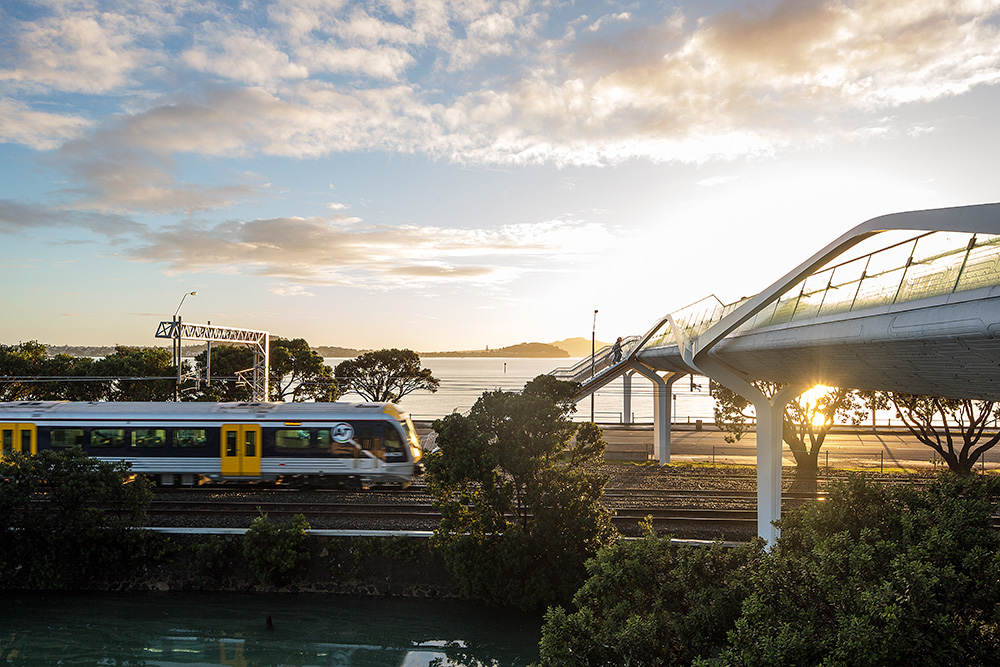
The shortage of emergency housing points to the shortage of affordable housing, which points to the shortage of mid-range housing as well. Each crisis is connected to the next and it all requires a connected set of solutions before it will be fixed.
Every sector has a role to play: central government and its many agencies, local government, iwi and other private providers, property developers and other landowners, banks and other finance companies, designers and construction companies, inventive and creative people who can dream up new ways of building, owning and living in homes.
The role of the council is to make it all happen. Someone has to say, this is our problem, we will own it and we will co-ordinate the great social, economic and cultural effort needed to fix it. That someone is us. The council.
We have to say, “We’ve got this.” And we need a plan to make good on that.
So, land banking. We’ll go after that. What possible excuse can there be for helping anyone to profit from misery? You’re buying land to speculate rather than build? We’ll add a ratings penalty.
All the other factors — tax, lending rules, the complete fiscal environment — that make property investment the rational choice for individuals but the wrong choice for the city and its economy: we’ll go after them, too. It’s the government that has to fix most of them, but we’ll persuade them. We won’t rest until we do.
This is the most fundamental issue we face as a city. The biggest problem that is barely even on the way to being resolved. And there are too many voters in Auckland for them not to listen.
Architects and architectural students with bright new ideas for cheap housing? We want you. Prefab construction companies and all the other innovative builders? We’ll be there for you.
We’ll help get more people into trade training. What about a campaign to train young women for the building trades?
All the designers, construction companies and developers who need help to turn their small projects into big ones? We’ll be there for you, too.
We’ll help get more people into trade training, more people into construction work. What about a campaign to train young women for the building trades? That would be an exciting thing for the city to become famous for, wouldn’t it?
Iwi and other social agencies, you’re critical to success. Ngati Whatua has replaced 10 state houses in Kupe St, Orakei, with 30 new terraced houses. The Kainga Tuatahi development cost $15 million — and 150 people now live in far better conditions than 30 used to on the same land. What’s not to like?
I’ll tell you. It’s not enough. We need more, and more. We need the ability to build Kainga Tuatahi at scale.
We need to expedite the consent and planning process without undermining the quality of the built environment. Easy to say, harder to do, but it’s not impossible.
And while we’re about it, we’ll introduce a warrant of fitness for rental homes.
As for property values, it will not be a disaster if we ease the pressure and avoid a crash. If your house next year isn’t worth any more than it is this year, that will not be a calamity.
A rapid-transit city
Eight hundred new cars a week. We know it can’t continue. We know it. We have to change the way we get around.
So we’re going to call time on the current transport policy to “build it all”. Growing rail, busways and cycle lanes is great, but if we also continue, as has just been announced in the Auckland Transport Alignment Project (ATAP), to pour billions more into motorway projects, it will remain a recipe for creating more clogged-up roads.
We need to focus right now on making rapid transit and cycling better options — because they are easier, cheaper and more enjoyable — for hundreds of thousands more Aucklanders.
The plan already exists. It’s called the Congestion Free Network, and was proposed in 2014 by the Campaign for Better Transport, Generation Zero and the Auckland Transport Blog.
This network proposes a staged roll-out of rapid transit to all parts of the city. Dedicated routes and services too frequent for timetables to be necessary. Rail and busways, served by feeder buses.
And guess what? While the ATAP anticipates a spend of $24 billion to 2028, with a worrying $4 billion shortfall, the Congestion Free Network is budgeted at $20 billion over the next 30 years. It’s called doing more with less.
The Northern Busway will be extended to Silverdale, a dedicated busway will be put in to the northwest and the Auckland Manukau Eastern Transport Initiative (Ameti) will be prioritised in the southeast.
Over time, often sooner rather than later, rail on the same routes will replace them all. We need rail to the airport. When it’s time for rail to the Shore it should not be bundled with an outrageously expensive road.
We will need to control the costs on all of this. There cannot be more surprises like the recent jump in estimates for the City Rail Link.
We will argue about the priorities and which gets done first, and we will argue about the details of exactly what service goes where. Fair enough. So we should. The decisions need to be fact-based and community-supported, and communities need to be engaged, from the ground up.
But we shouldn’t have to argue about the underlying principles of the plan. It’s essential to the health and future of the city.
A cycling city
A cycling city. Wouldn’t that be something? Everywhere you go, so many people riding bicycles. Clustered at the lights, streaming down Nelson St and along all the other bike lanes. Busy around every school.
Kids, commuters, shoppers, recreational riders. Doing it for personal health, for cost benefits, to reduce pollution, to lower greenhouse gas emissions. And just doing it for fun.
And here’s the thing: when Auckland is a cycling city, the beneficiaries won’t be just cyclists. Car drivers will benefit, too. You will have more room on the roads.
We’re inching towards this, but we need to get the rush on. The cycling city needs a tipping point, that moment when cycling becomes the thing you do.
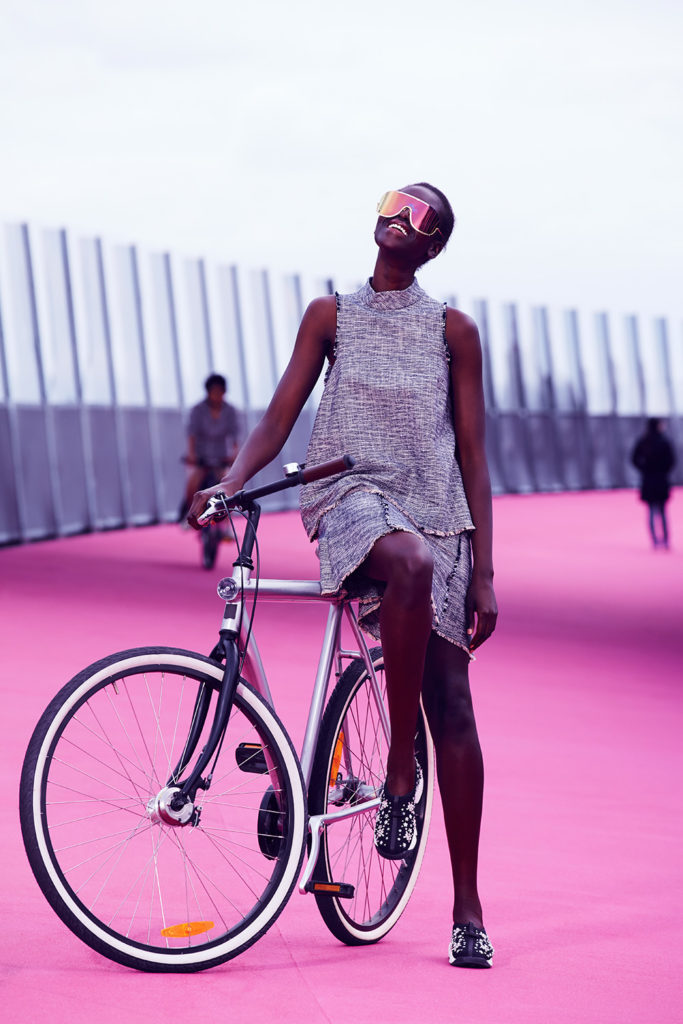
The key is kids.
Right now, only three per cent of teenagers ride a bike to school and it’s much the same at primary and intermediate level.
We’ll have a citywide scheme to get kids on bikes. It will involve bike lanes, the permanent ones and a whole lot more temporary ones. We’ll help schools help kids and their parents get with the programme. We’ll get bike retailers deeply engaged, and we’ll make it a community-driven project.
We’ll start on this straight away. Heading into summer, everyone will know that the 2017 school year will be bike time.
And let’s not forget, for those who can, walking to work is the best way of all. Transport planning needs to prioritise the pleasure to be gained from walkways — not just boardwalks on the waterfront, splendid as they are, but city pavements, safe routes through parks, decent suburban footpaths.
The link superbus
We’ll make the Link bus cool. Walking, cycling and jumping on and off an efficient, frequent, WiFi-connected, electric bus (and before long, tram) will become the only ways to get around the central city, unless you’re a service vehicle or are prepared to pay a high fee to drive your car in there.
Those buses could be artworks. They could be moving cafes. They could be magazine shops, or offer sneak previews of new movies, or videos of travel destinations, or new music of your choice…
They could stage political debates! Karaoke! We can try a thousand things, stop the ones that fail and expand the ones that work. We can have fun.
Public transport has to be cheap, so fares have to be held down.
It has to be easy to use, so the communication problems absolutely have to be fixed.
It’s not acceptable that if something goes wrong with your Hop card, you might find yourself pitched into a Kafkaesque nightmare where no one will help.
It has to be reliable and safe. So we need far better night-time and weekend rail services.
And we want a lot more ferries. Fast, efficient, some big and some small, connecting all the coastal suburbs with the city centre and the other town centres, buzzing all over the water.
Public transport has to take the lead. Give people the services they want and patronage will blossom.
Currently, you might be forgiven for thinking more trains won’t be put on until there are crowds standing on the platforms just in case a train turns up.
Maori on council
A council for all Aucklanders. The first thing that means is that there should be Maori seats on the council.
This city was built on the generosity and goodwill of Ngati Whatua. That goodwill has been systematically exploited, even after the heroic protest in 1977-78 at what was then called Bastion Pt, at Orakei, and we continue that exploitation today.
There should be Maori seats on the council. If it’s good enough for the New Zealand Parliament, what possible excuse could we have for it not to be good enough for the Auckland Council?
Maori seats, voted for by Maori, under a mechanism determined by Maori. Replacing the non-elected Independent Maori Statutory Board, which enjoys voting rights on council committees. Maori seats are essential to the rights of Maori and for the health of the democratic process.
The city centre is not the city
Let’s go downtown, to the place that’s becoming the pedestrian heartland of a city full of shoppers and office workers and residents.
A place that’s culturally and architecturally stimulating, dedicated to the preservation of what’s left of its lovely old buildings and the celebration of what’s exciting and new.
A place whose parks and waterfront honour the beauty of the natural environment and the history of the city and its peoples. A place that’s safe and active, day and night.
A place that’s open to the anarchic juices of creativity, a place that presents us with surprises and adventures and unexpected rewards.
The central city can be that place, and will be. But Auckland isn’t just the central city. If it’s good enough for downtown it should be good enough for the other town centres, too.
From Browns Bay to Botany, Westgate to Pukekohe, in Manukau and Henderson and Takapuna and Albany, Auckland’s centres are ripe with possibility.
Let’s have some dance parties in the suburbs. How about a festival of food in Botany?
The next time the Globe Theatre pop-up comes to town, why not set it up in Manukau? Isn’t it time for a really big Environmentalist Extravaganza out west?
This is critical: those other centres don’t all need to be the same, and they shouldn’t try to be, but they do all need to offer a richness of opportunity to the people who live, work and play there.
And some places need special attention. What about creating The Great Otahuhu Incubation?
King’s College already shares expertise with Otahuhu College, which is just over the back fence, and McAuley High. Let’s beef it up.
Build a programme to ensure every student goes into a job if they’re not going on to higher education.
Beef up the programme to make every home a warm, dry home. There’s a beautiful shopping precinct in Otahuhu, just waiting to be restored.
There’s beachfront and parklands, begging for some love.
It needs flexible creative thinking and it needs joined-up thinking. It needs to be a community project, run by the community and actively, financially, supported by local industry.
It’s not for the council to tell Otahuhu how to be great again, but it is for the council to help: to push the planning processes along, to facilitate, to encourage, to enable.
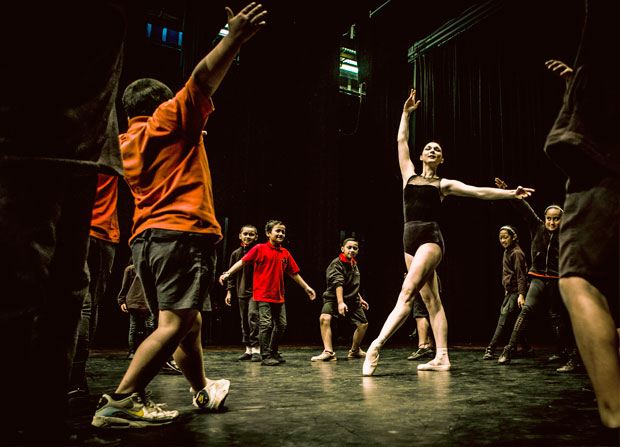
Young and old
A council for all Aucklanders. That doesn’t mean regardless of your age or ethnicity, as if those things don’t count. They do count. Very often, they define us. Auckland will thrive as its people thrive, with everyone welcomed and encouraged to belong and to participate as themselves.
The elderly, not hidden away but valued in the community. It’s good for all of us to live in a place with lots of age diversity.
Young people, not dispossessed of what their parents rightly thought was a birthright: the chance to work and save and own a house.
Children, able to learn independence and be safe doing it. Children, and not just those whose parents have the money, able to benefit from the great wonderland of activities and experiences this city offers.
Decisions where they matter most
We need to bring it home. There are decisions made in Wellington that should be made here, especially around transport.
When the government expects Auckland to pay half the cost of a new rail project, we should be the ones to decide how we find the money, not them.
The same principle applies within the council. Some decisions made by the governing body should be made by local boards.
Some decisions made by the council-controlled organisations (CCOs) should be made by people who are elected and accountable.
When the government expects Auckland to pay half the cost of a new rail project, we should be the ones to decide how we find the money, not them.
The principle is called “subsidiarity”. It means decision-making — the power — should reside as close as possible to those directly affected. Currently, local boards have a $15 million budget but only $1 million of it is discretionary. That’s going to change.
The council surveyed Aucklanders this year and discovered only 15 per cent of us have confidence in them. That’s disturbing. And yet, that didn’t lead to a publicly visible, inside-out overhaul of council culture and behaviour. That’s also disturbing.
There’s been too much consultation from the top down: come to our meeting and we’ll tell you what we’re going to do.
Even when that’s not what it was, too many people felt it like that.
The council has relied too much on traditional ways of talking to us: leaflets, newsletters with the rates bill, public meetings, newspaper notices. Don’t they have an app for that?
There’s so much more that could be done. We’ll beef up the range and quality of digital communications tools, especially on Facebook and other social media. They do that stuff now, but there’s far more to be done.
We’ll engage more actively with the community: not just through residents and ratepayers associations, but through schools and community groups.
We’ll have open forums in the town centres. We’ll make sure everyone has easy access to elected officials, and that council staff take guidance from those elected officials. We’ll go bottom-up, not top-down.
This will be especially so in the south and west, among Maori and Pasifika, where public engagement and voter turnout are low.
It will also be so for younger people. Only 34 per cent of people under 25 voted in the last election. Among the over-70s, it was 89 per cent.
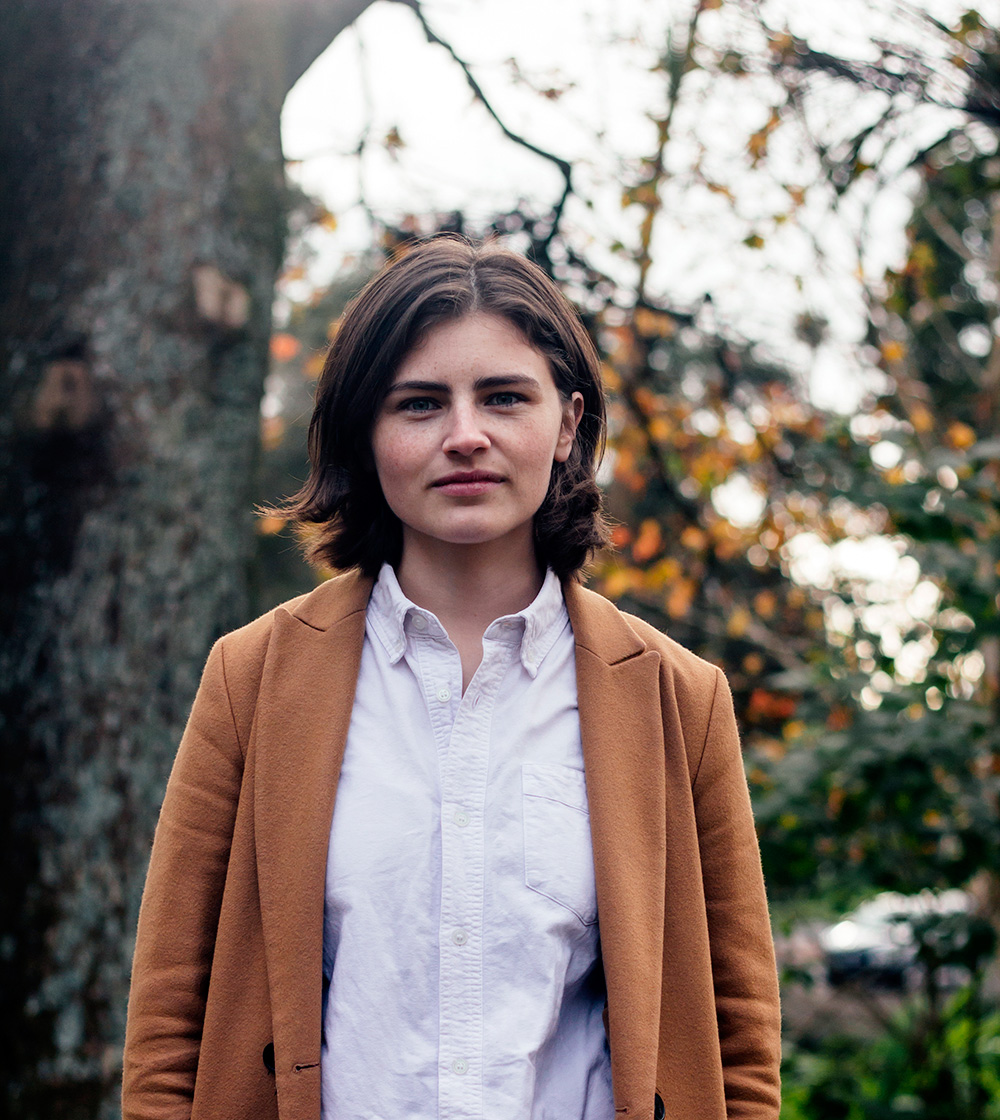
Mayoral candidate Chloe Swarbrick (right) is right: we have to recognise we are failing to get younger people engaged. We will have a democratic crisis if we don’t fix this.
More of the decisions made by officials should be open to public scrutiny.
Like resource consents. If they’re controversial, and it’s almost always clear when that’s the case, they should be notified: it’s as simple as that.
Heritage trees under threat, harbour reclamation, these things should be obvious to everybody. Local boards need greater power to instruct council officers in this.
But let’s remember, one of the reasons council officers are sometimes distrusted is that they take seriously their duty to safeguard the public.
They’re the front line against food poisoning, leaky buildings and your neighbour’s sneaky plan to block your view, and they get no thanks for failing to do their job well.
And yet the consenting process still needs to be efficient, insightful, enabling. The culture can’t be one of obstruction.
We also need a better mediation process. Let’s sidestep, as much as we can, expensive court proceedings.
Disputes Tribunals are simple and quick and work well for general disputes. Can mediation over consenting issues be as simple? Let’s find a way.
And what about trialling some new ways of making decisions? How about citizens’ panels? A group of citizens, randomly chosen but controlled for demographic spread, who are given the task of deciding on a complex issue.
You give them training and background information and maybe ask them to tackle a local issue, like: How should your town centre be developed? Or maybe a central issue: What’s the best strategy for helping the homeless? Or even a citywide issue? Maybe: What do we do about rail to the airport?
Some of the changes will require legislation and some will require plan changes. Some need new policies and a change of council culture. Some are long-term and some we can do tomorrow. We’ll work our way through all of it.
There will be councillors and council officials who say, “But we already do this stuff.” Not so. That 15 per cent satisfaction rating is not acceptable.
We have to get better, much better, at all the ways the council relates to Aucklanders.
What about the rates?
Residential rates are set to rise by 2.4 per cent in the current annual budget. That’s reasonable. We don’t need more, and in future budgets we won’t ask for more. But we will spend what we have more smartly.
We won’t cut rates. The worst thing a council can do is to stop spending and let the problems pile up. It’s nothing less than civic vandalism, and it prevailed in this city for years.
It’s the reason we face so many problems today, especially in transport and housing. In infrastructure and social needs, a council that fails to keep up with the requirements of a modern growing city is unfit for office. We won’t be doing it.
But we will be looking hard at the efficiency of our spending. Fully 68 per cent of everything the council spends goes on buying goods and services.
Are we getting value for money? Do we have the right rules in place for procurement and the right principles to guide our decisions? Are the processes transparent enough? Or do suppliers see us coming?
Setting the 2017/18 annual plan and the 2018 renewal of the Long Term Plan, which looks ahead 10 years, will between them provide a framework for a comprehensive review. And we’ll get started straight away: it’s not projects so much as processes that need to be overhauled.
Because I’ll tell you now, we’ll spend more on suburban and town-centre facilities, which were cut in the current budget.
Pools and libraries; parks, reserves and other green spaces; sport, arts and recreation. These things are not just nice to have, they are the essential building blocks of functioning communities.
We will also operate on the principle that commercial enterprises benefiting from council plans should share in their costs.
Auckland growth will not be an excuse to transfer wealth from the general population to big landowners. Businesses along the transport corridors and around the big new railway stations will help pay the costs of bringing them thousands of new customers.
Do it fast and dirty
Council thinking around new projects has been captured by gold-standard planning. So, for example, when we create a new pedestrian-and-vehicle shared space in the city, like Elliott St and O’Connell St, we take the chance to fix the drains, we lay the most expensive pavers known to humankind…
It’s the wrong way to do it. Very often, that work can come later. Why not put out road cones and some planters and invite the retailers to fill the place with tables and chairs and street stalls? You know that’s how they changed Times Square in New York, right?
Pop-up pedestrianisation. Changing things quickly and cheaply. Good enough for New York? Good enough for Auckland.
It’s a great approach. We can do far more for less. Mistakes won’t matter. We can trial things, take more risks, aim higher, because the failures are easy to scrap and they will cost us nothing.
We should be doing this with parts of Quay St, Queen St, Victoria St, Albert St, you name it. We should be doing it in Mt Albert and Panmure and Birkenhead.
We should be doing it downtown, right now, because the City Rail Link disruption has made the place chaotic anyway.
With fast and dirty, we can trial things, take more risks, aim higher, because the failures are easy to scrap and they will cost us nothing.
Let’s turn that to our advantage, with the Great Inner-City Experimental Plan.
Pop-up walkways and gardens. Why not create open-air markets specifically for the inner-city retailers whose shops have been hidden by the CRL building sites? Allow them to come out on the streets and open areas, to advertise and to sell.
Here’s the thing with fast and dirty. Every idea that fails, we ditch it. Nothing lost.
Every idea that works, we refine it, optimise it, and then, when we know what it needs to survive longer term, we can spend the serious money.
The business of council
We have CCOs — council-controlled organisations — operating at arm’s length from council. It’s to encourage business rigour. And we have an elected council to maintain democratic accountability. Neither has prevailed as it should, and that will change.
The council sets the policy direction and the CCOs will be held to account for operating within it.
Especially Auckland Transport and Ports of Auckland, which is answerable through a CCO, which will both need to review their approach.
There is a high-powered committee which brings together the heads of all the CCOs.
That’s great for co-ordinating the work of all parts of the council. But it’s not answerable directly to the mayor or council. That’s going to change, too.
We will introduce the living wage as a minimum for council and contractor staff. It’s not conscionable to aspire to be a liveable city and do any less. And we’ll encourage others to do the same.
We’ll do it without spending more, by asking our highest-paid staff to accept a pay cut — 5.5 per cent will do the trick. That’s all.
People who work for the council at all levels deserve to be well paid, but we won’t be all that interested in people who are in it only for the money.
We want people committed to the culture of public service. We want to create the most exciting large workplace in the city, staffed by people who want to be part of that. We’re building a great city here.
Do we have too many staff? Auckland Council employs 11,500 people and pays them close to $1 billion in wages. I’ll say this frankly: that might not be too much.
We have a building consents team used to dealing with 3000 consents a year that is now struggling with 9000 and it will soon be handling closer to 15,000. In that department there will be a growth policy, not a sinking lid.
But elsewhere? People tell me all the time about duplication, triplication, whatever the word is for 10 people in a room when two or three will do.
Proposals and requests that get pushed from one inbox to the next with no one ever making a decision. We need to overhaul all that.
Part of being an exciting place to work is empowering staff to make decisions, solve problems, get things done.
Which leads to the question of responsibility. The council CEO will have some new key performance indicators. Culture — the improvement of relations between council and citizens — will be one.
Staff satisfaction will be another. And efficiency, which is already there, will be beefed up. The boards of the CCOs will be required to do the same with their CEOs.
We’re on the bus
One other thing we’ll do to save money and at the same time help make Auckland a smarter, greener city: council staff will catch the bus and ride bikes.
Especially Auckland Transport staff.
Frankly, if they find public transport isn’t efficient enough, or bike riding is too dangerous, well I can’t think of a better way to get them to focus their minds on fixing the problem.
Yes, we’ll still have some council vehicles. Some staff have very good reasons to drive. They’ll be electric, phased in over time.
A smart city
What’s coming next in work, travel, leisure, entertainment, environmental management, data analysis, communications?
Is it true that technology will destroy 45 per cent of jobs? What are the challenges and what are the opportunities?
The first big question is how do we future-focus everything we do? But the really big question for the economy of the city is this: how do we attract, and keep, entrepreneurs who want to work at the billion-dollar scale?
They’re the people who will provide the foundation of the economy, with employment and everything else that follows.
We need half a dozen of them, and we’re not going to tell them they don’t have to pay any tax.
What we are going to offer them is a city where the best staff will want to come and live: a city that’s famous for its quality of life and is super-connected to the world.
We’re going to require Ports of Auckland to get those cars off the wharves. The jig is up. Do it now.
A city with a high-wage economy. With enterprises that demand the best minds and is ready to pay for them. With all the commerce that flows from that. We will work with the education sector to grow the city’s capacity for high-wage skills development.
A clean city. A pioneer in its use of solar, wind and wave projects. Electric vehicles, and did I mention cycling? A city with a highly efficient household waste programme that returns compost to farms and inner-city gardens. San Francisco does it and we should, too.
A city that incentivises companies to operate in far more profoundly green ways than now. The French city of Lille does it and so should we. How many companies have replaced car parks with Hop cards for their staff? The council doesn’t even know.
A city that will begin planning to move the port. It’s early days for that but planning has to start.
And as a symbol of our intent, there is something we will do straight away. To underline our approach to transport, to the use of the waterfront and to building a city fit for the future, we’re going to require Ports of Auckland to get those cars off the wharves. The jig is up. Do it now.
A new garden city
You know those empty lots in the city? Elliott St and Victoria St. The hole between Shortland St and Fort Lane? And there are more. Let’s help the owners turn them into gardens.
Maybe let them put in two levels of car parking to pay for it, and top that off with allotments: edible gardens with public areas for market stalls, gardening demonstrations, artwork, displays.
The advantages are environmental, economic, social, cultural and community enhancing. Growing food in town helps people who live in the city and come in for work and play.
It gives people a nudge to get communal with each other — especially the old and the young.
This isn’t just about the central city, either. Planting can be done all over the city. And it doesn’t have to be big allotments.
What about planting edible borders at bus stops, intersections, wherever there’s land for it?
What about planting gardens on the berms? Maybe with a bit of very social competition: best berm in the street; best street in the suburb; best suburb in the city.
They’ve got city farming inside the downtown areas in Detroit. There are “incredible edible” public urban gardens in towns all over Britain. We can do that.
A carnival city
We need some really big things too. Transformative things. An event.
Could we use the Auckland Arts Festival to transform not just Aotea Square but the whole city? Could we create a world-famous music festival in one of our magnificently beautiful sites?
They do it in Eau Claire in Wisconsin — why not Auckland?
Do we need another giant sports extravaganza?
Let’s get the bids and best ideas on the table. What’s Auckland going to do to showcase its fantasticness? What event will help unlock, for all of us who live here and for the world, the magnificent potential of the city? What about a grand Carnival of the Pacific?
Thinking big on the waterfront
The waterfront’s great and it’s getting better, but long term, we need a people magnet, a cultural statement, a big this-is-who-we-are waterfront project.
Why not have two? Twin projects bookending the central city, one at the Tank Farm and one out on Bledisloe Wharf or nearby.
To the west, let’s build a Museum of the Pacific. A place that showcases our arrival stories, our history as a maritime nation and our relationship with the peoples of the Pacific.
That tells the stories of the Southern Ocean and Antarctica, the extraordinary wonders of the sea and everything that lives in it, the challenges of climate change and the science of the future.
Most of all, let’s make it a celebration of our technological genius, from the extraordinary sailing feats of Kupe and the other early voyagers, all the way to the America’s Cup and beyond.
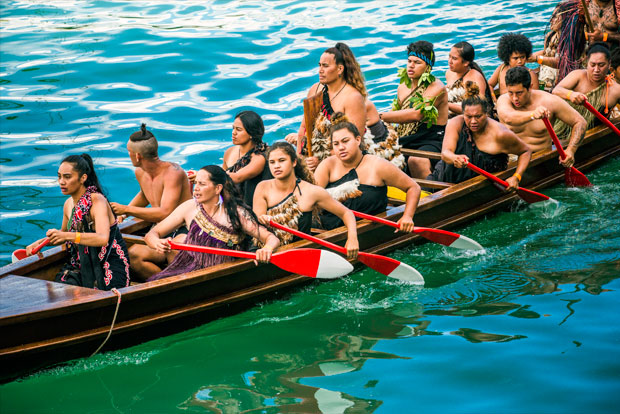
And let’s make the building itself an embodiment of that genius.
This is a big, long-term project, with funding sources we can as yet scarcely dream about. But we need to start sometime.
And to the east? Let’s put an end to one of the sad realities of this city, that there is not one single major public place dedicated to the mana whenua.
It’s not for the council to build such a place. But it is for us to offer, to Ngati Whatua and all the other iwi and organisations of Tamaki Makaurau, to help get it done.
The council at its finest
Council meetings are going to improve. Here’s the test: you should be able to take a group of schoolkids interested in civics to a council meeting, especially a big one, and the experience should excite them.
Right now they’d be forgiven for thinking they’d stumbled into a retirement home for the pompous, the out-of-touch and the halfwitted.
Council meetings would put you off democracy for life.
We’ll do better, and it won’t be that hard.
Sort out more of the petty stuff away from the meeting room, and focus debates on the things that really matter. Turn the room into more of a debating chamber.
Maybe introduce a Question Time, like in Parliament, but use it so councillors can quiz the mayor and officials.
Have the matters under discussion communicated clearly to the public ahead of time and explained on screens in the room, in plain English, for all to see. Do all of this — and watch councillors raise their game.
Council meetings, especially the big ones, where we wrestle with the grand task of building this exciting city of the 21st century, should be like Kelly Tarlton’s and the Sky Tower and Rangitoto: a great Auckland experience.
Creative thinking
We’re going to change the office of the mayor by staffing it with people dedicated to good ideas and getting things done.
We’re going to establish more hotlines to social entrepreneurs — people like the wonderful folk at Te Puea Marae, who do things while the rest of us talk about it.
And we’re going to tap into the most imaginative, creative minds in the city.
People with minds like that don’t generally work for the council, or want to. But they’ll be happy to help.
That industrial designer who just invented a better wheel? We’ll get her in the room with a bunch of other sparky creative people and throw problems at them.
See what happens.
They might never have tried to solve a social problem or a town-planning problem in their lives, but they know how to think and they’re very good at thinking sideways.
That idea I mentioned, to help retailers disrupted by the City Rail Link to create street markets? We can put some bright minds onto making that work.
Maybe we’ll call it the Crash Team, because it’s about the collision of ideas and breaking down old ways of thinking.
You belong for only a few meetings and then someone else takes your place.
City of a thousand lovers
The Auckland Unitary Plan, now in place, is an invitation to us to make this city great.
But the plan needs active management or it will be turned against us all, sabotaged by the small-minded and the selfish.
We will be guided by three principles:
One: The council and all its officers will be customer-focused. We will enable, not obstruct. We will stop covering our arses. We will play the yes game.
Two: We cannot do it from above. The council must empower communities, not do things to them.
Three: Whatever we do, we know we can always do it better. So we must remain open to making it so.
We live in the city of a thousand lovers, where “a thousand” really means “too many to count”.
A thousand wonderful ideas, a thousand inspirational people, a thousand moments of excitement and delight.
Tamaki Makaurau.
Let’s be worthy of the name.
Thank you. Ka kite ano.

